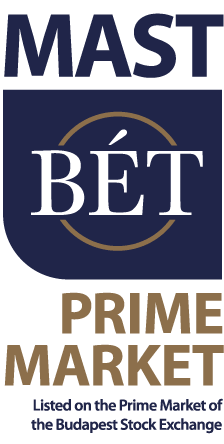(Results of survey on housing market published in May 2021, conducted by GKI and Masterplast)
GKI’s surveys aiming to monitor the residents home renovation and modernization plans have been carried out by the assistance of Masterplast from January 2020. The sample of the population surveyed is representative of 1,000 people by gender, age, place of residence, and education.
The effective regulation on Family Housing Renovation Program, entered into force in January and available until December 2022, was welcomed with high interest. The decision makers have refined the concrete details and terms and conditions of the application process, while they took into account the existing familiar circumstances as well. The promotion of the program got high publicity.
As a result, the tendency suggests that the people interested in the program have become more informed and can assess their chances more realistically. According to the answers of the survey published in May 2021, 3% of the respondent households are certain to appeal for support to renovate or modernize their homes. Another 8% have intentions to do so. (Experience has shown that this latter means those only considering the opportunities.) However, 13% of the respondents are not sure yet whether to appeal for the support during the maturity. If these ratios are screened to the whole population, those who are certain to renovate mean 120, while those who have intentions means approx. 320 thousand families. All in all, the nearly 440 thousand families can benefit from the Family Housing Renovation Program throughout the upcoming two years. In the survey of January, only 7% of the respondents were certain to renovate, while another 17% expressed their intentions. This is explained by the fact that the population assess their chances more realistically. It is also true, that some families have already started, or even finished, the application process – and they are not present in these figures anymore. Thirdly, the third wave of the epidemic, which consequences were much stronger than expected, made a lot of households rethink and prioritize their plans. The realization of the rapidly increasing construction material and work prices could also contribute to this result.
The opportunity of the state support aroused plenty of interest among the younger generations. Among those families, where the breadwinner is aged between 18-29, almost 6, probably another 11%, are preparing to participate in the program, and between the ages of 30 and 39, the same two rates are between 5 and 9%. The plans of those aged 40-49 are essentially in line with the sample average. The support is irrelevant for those over 50 and especially over 60. In the January survey, even the middle generation of 40-49 years proved to be the most active planner – and the biggest setback was also felt here. The younger ones are less shaken from their previous plans.
Applying for state support is more popular among those living in detached houses – 4% of them said they were certain, 9% said they were likely to participate. The plans of the residents living in panel flats are not far behind this either, here the proportion of sure participants is 2.5% and the proportion of likely participants is 10%. Among the residents of brick-built condominiums, the same two rates barely reach 2 and 6%.
There is a slope in terms of expected participation in the Family Housing Renovation Program: while relatively few people in the capital and large cities are interested in the application (around 2% and 5%, respectively), there is a much higher level of participation in small towns and villages (here, the proportion of those are certain is 5, and the proportion of those likely to participate is almost 10%). Since the Family Housing Renovation Program was extended to villages, people living in smaller settlements could also receive help to renovate or modernize their homes. Among the statistical regions, the highest activity is expected in Central and Western Transdanubia.

Masterplast Nyrt.
Founded in 1997, the Masterplast group is one of the leading building material producer and distributor companies in the Central Eastern European region. The company group owns subsidiaries in 10 countries, and sells products in a further 30 countries. The company is registered in the premium category on the Budapest Stock Exchange, and had revenue of 201,8 million euros in 2022.

